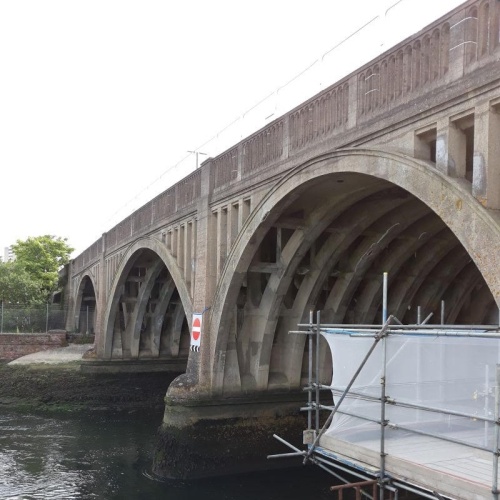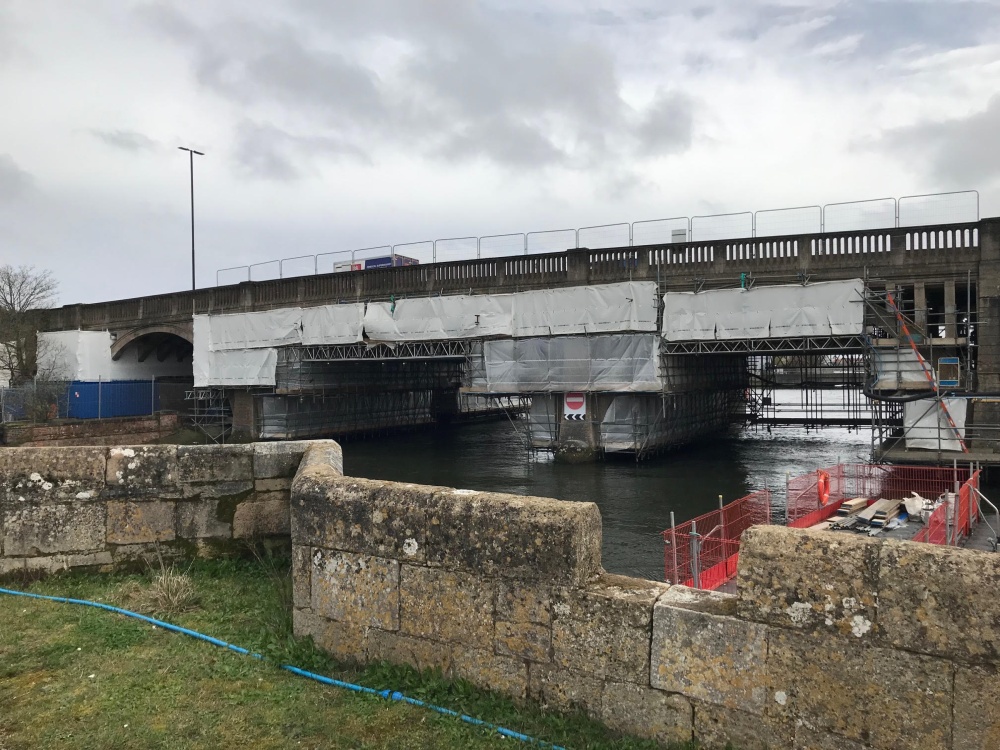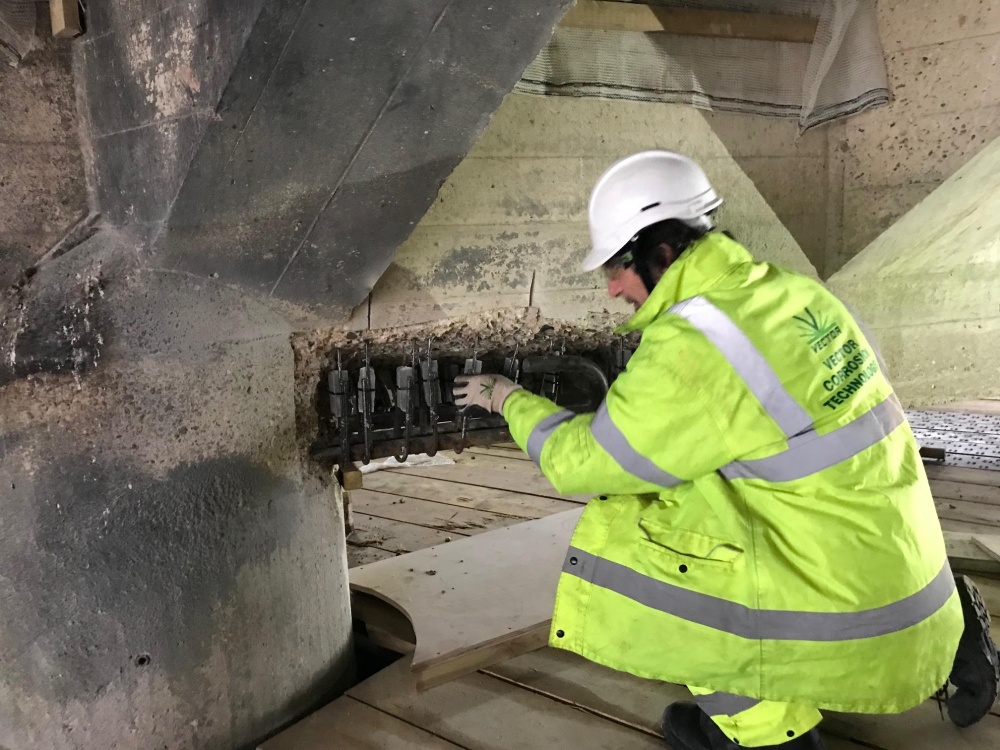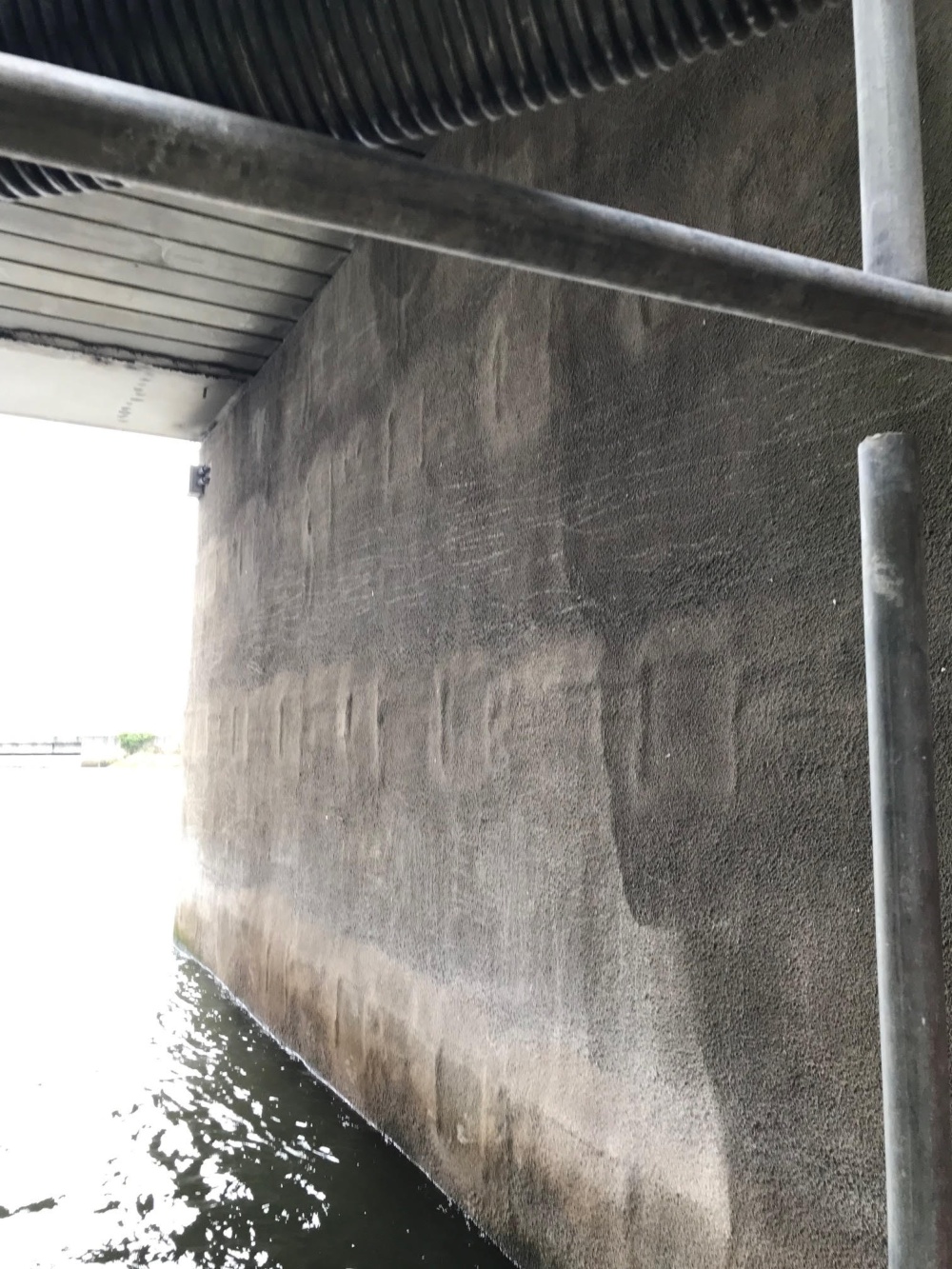Redbridge Viaduct

At over 50 years old, the Redbridge Viaduct carries westbound traffic out of Southampton over Test Lane, the railway and River Test. This is also a key route for goods in and out of the Port of Southampton to destinations throughout the UK. This structure belongs to a group of bridges over a large sprawling causeway that has a unique marine environment and carries more than 60,000 vehicles a day.
The Problem
The original aim of this project was to increase the existing parapet height on A35 Redbridge Causeway to offer increased protection for those cycling and walking and to encourage more people to either walk or cycle as their first choice of local travel.
As with many road bridges de-icing salts leaking through from the road above were elevating the rate of chloride ingress into the concrete. This was exacerbated further by the location of the bridge being an estuary where the water was saline or brackish.
A major obstacle was the outbreak of Covid-19 during the project. Because this was critical infrastructure, the work had to continue, so the contractor devised ways of keeping their workforce safe via a series of stringent checks and procedures.

Our Solution
Although the funding was substantial, the task facing them was enormous. Vector was able to offer a broad range of options for the client to consider to help manage the corrosion portion of the project. These included impressed current mesh and overlay cathodic protection, Galvashield® DAS jackets for piles, and Galvashield® Fusion® T2 for difficult-to-access areas, including over live railway lines.
Electrochemical Chloride Extraction(ECE) was discussed as an option, but the final design was a mixture of impressed current mesh, an overlay of cathodic protection for the most severely affected locations and Galvashield® XP2 for all repairs that were outside the influence of the ICCP system.

The Result
The use of Galvashield XP2s allowed the client to target their funding wisely and keep within a finite budget. It also allowed work to be completed more swiftly compared to an entirely ICCP system whilst still providing a balanced, cost-effective solution to the chloride risks.
The design for the Galvashield XP2s was provided by a Level 4 Corrosion Engineer from Atkins, who made sure that the correct number of anodes were being installed for the amount of steel needing protection.
These anodes will help to extend the life of the repairs and allow users of the viaduct to expect no further work on these major arterial structures for at least another 25 years.

Technology Used
These innovative products and technologies were used on this project.